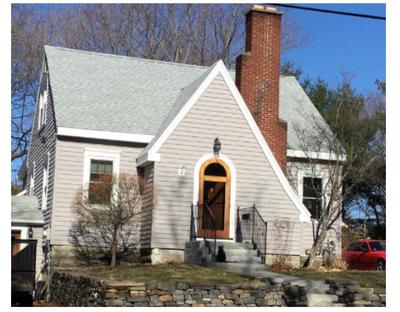Portland's mail-order kit homes stand the test of time
by Kate Irish Collins
(www.theforecaster.net)
PORTLAND — For some local homeowners at the start of the 20th century, the American dream was delivered via the U.S Postal Service.
Kit homes, which arrived by mail, made home ownership a reality for many Americans: the homes were economical, easy to assemble, and could be built in any corner of the country.
In Portland there’s a concentration of such homes in the 1920s-era Oakwood Heights subdivision near the University of Southern Maine.
Now the architecture and importance of those homes will be celebrated in a presentation entitled, “Building the American Dream by Mail: Kit Houses in Greater Portland.”
The lecture, which is co-sponsored by Greater Portland Landmarks, will be held at 6 p.m. Wednesday, April 26, in the Talbot Lecture Hall on the Portland campus of USM.
The event is free and open to the public, but pre-registration is required at portlandlandmarks.org due to limited seating.
Julie Ann Larry, director of advocacy for landmarks, will give the lecture. She said the local kit homes she’ll include in her talk were mostly built between 1908 and 1940.
They were “very affordable to build,” Larry said in an interview this week, because the “companies who manufactured these homes either had their own lumber mills or could purchase materials in a high enough volume to keep prices low for their customers, making them competitive with local builders.”
Another benefit was the relative ease of building the homes. Building instructions were included, and “companies advertised that these kit homes could be assembled within 90 days,” she said.
Sears Roebuck and Montgomery Ward were probably the best known of the kit home providers, but other national companies also offered pre-cut and ready-to-assemble homes.
Larry said a kit home would include “nearly all the materials you need to build a house,” including lumber, decorative mill work, flooring, siding, roofing, gutters, piping, windows, hardware and paint.
The materials would “all be shipped from a mail-order company by train for assembly on your site by local builders,” she said. Although the homes were based on standard plans, there was also “some variety available,” particularly “in the extras you could add to customize your house.”
“You could customize your interiors with various cabinetry, stained glass windows, doors, hardware, trim, light fixtures, fireplace surrounds and plumbing options,” she said.
Larry said the speed at which the homes could be erected was “an appealing aspect for developers who were interested in building homes quickly for resale,” as well as for large employers “that built company towns to house their workers near their mills or factories.”
“Sears also offered mortgages at favorable rates to buyers of their homes,” she said, which made them even more attractive.
Larry said even though the homes were assembled from mail-order kits, they were built with “high-quality materials” that have withstood the test of time.
For instance, she said, “Sears Roebuck, one of the most popular and well-known manufacturers, used materials like oak flooring, oak and maple trim, and cedar-shingle siding in their kit homes.”
Many of the homes, which are now 80 to more than 100 years old, have been altered and renovated over time and now may include new siding or new windows, but others, according to Larry, still “retain their original materials.”
Because the kit homes were designed to “lure potential homeowners, usually from more established neighborhoods,” she said, “many of the kit homes featured large front porches, porticoes or appealing entry ways that helped to create an interesting streetscape.”
“Although many homeowners had automobiles, they usually would have only one car and the pedestrian experience and neighborhood curb appeal was as important as the interior of the home,” Larry said.
While many people think kit homes were Craftsman Bungalows, they were actually offered in a variety of styles, from Tudor to Colonial Revival.
“Kit house manufacturers also sold garages, outhouses, summer cottages, hunting lodges, schools, and even gas stations,” Larry said.
“These types of homes have not been identified and well-studied in Maine and can be hard to identify from the street, as many builders copied the popular plans, and some have been altered over time,” Larry said.
With this lecture, “Greater Portland Landmarks is interested in hearing from homeowners that think they may have a kit house so that we can have a better understanding of the number of kit homes in greater Portland and learn more about the developers and homeowners that chose to build them,” she said.
Join in and write your own page! It's easy to do. How? Simply click here to return to News portal.



